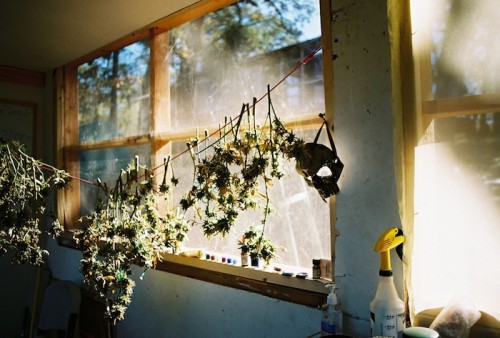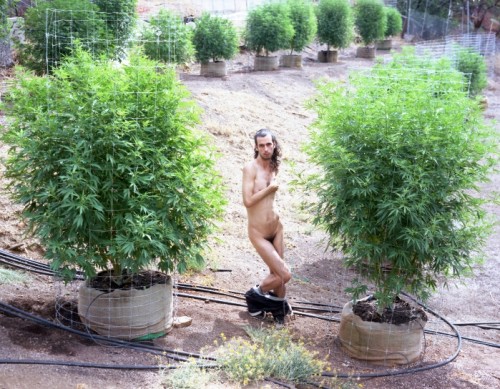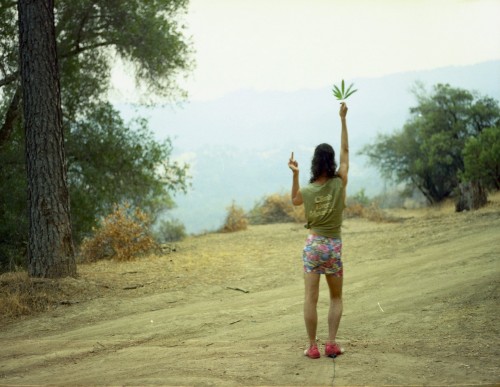Affinity In The Tall Grasses of California
In 2011 I started working on a project that was looking at the connections between Medical Cannabis and HIV and AIDS, specifically at the queer contribution to the movements for legal access to Cannabis.
The legislation which legalized the plant for medical purposes in California was called the Compassionate Use Act of 1996. It was compassionate because the disease and the medications which made it manageable were painful. The early treatments were literally, in some cases, singly responsible for the death of people infected with HIV. The Dallas Buyer’s Club, which drove home the hazardous dosage at which early treatments were administered, showed some of this early history. If the dosage did not complicate the conditions or outright kill people, the side effects of the up to 20 (or more) pills that were being prescribed during the early to middle epidemic rendered living almost not worth it. Incredible pain and digestion problems, some so intense that people couldn’t stomach food and were nauseas all the time. Sleeplessness, weight loss, and a host of mental problems such as the obvious depression associated with a cureless disease that many were considering a cure for the perceived social ill of Queerness.
The use of Cannabis was at first colloquially recognized as an antidote to this, dulling pain, increasing appetite, and helping with the depression. The medicinal benefits of Cannabis were hotly contested for many years, and even still as research on the plant is so highly restricted within the US that it can only really occur outside of it’s borders. Strangely, Israel has shown to have some of the most convincing research into it’s medical benefits. Among these, alleviation of pain, of glaucoma, active anti-cancer benefits, apetite restoration and general well-being have truly improved the standing of Cannabis in the eyes of the public. In addition to this, the coalition of people who have openly stated it’s benefits has gone from the highly marginalized Queer and HIV positive community to others who suffer from chronic conditions, including children and families.
My own inclusion in this process has occurred through working within the medical Cannabis system. I have, since 2010, experienced a series of autoimmune conditions which were all “mysterious” though seem to have been alleviated through a ridiculously cursory series of internet searches – mainly through the reduction of my intake of all cow dairy and soy products and the application of topical or internal cannabis oils in low dosages. The more time I have spent watching the debates around the issue, researched the absolutely ludicrous rationalities behind it’s stigmatization, and the manner by which it’s status in the US is changing from a community based medicine to another extension of capitalist patriarchies is depressing to say the least. I personally don’t really care what anyones reason for using the medicine – I can go outside and drink myself to death legally today. This kind of ethical and moral disconnect renders that concern null and void for me. I do care that for some reason the only place where I should have default autonomy no matter what comes with terms and restrictions – that is all the area from my skin in. It’s unnerving, so much so that I have begun to make a body of work which is no longer documentary, and increasingly geared towards exploring the complicated issue of Cannabis within contemporary society. I took the work I currently had, and then applied for a Weisman grant through Columbia.
The Weisman is a grant that will give you half of your projected cost for a project, up to 4 – 5 thousand dollars on their end. I had the honor of receiving a Weisman for this photography project, and turned the funds I received into a successful kickstarter which ended up allowing me to return to California and make photographic work about the Queer Cannabis community. In doing this I realized that the work would be better served as a video project, and have begun filming some initial scenes to lay the groundwork for a future kickstarter and grant-application process that would support a film looking at the way in which HIV and AIDS has opened the door to the legalization of Cannabis in the United States.
And the climate is changing. In California the access to water is becoming severely limited due to an ongoing drought which has essentially drained the aquifer. Nationally, the push for federal regulation of the plant in something akin to the manner in which alcohol is, will be voted on in 2016 or 2017. The opportunity to pursue this work through the Weisman has been incredible, and not possible without Columbia. I’m looking forward to releasing a limited-release book of the work thus far, due out this December or January, and another kickstarter next spring.





